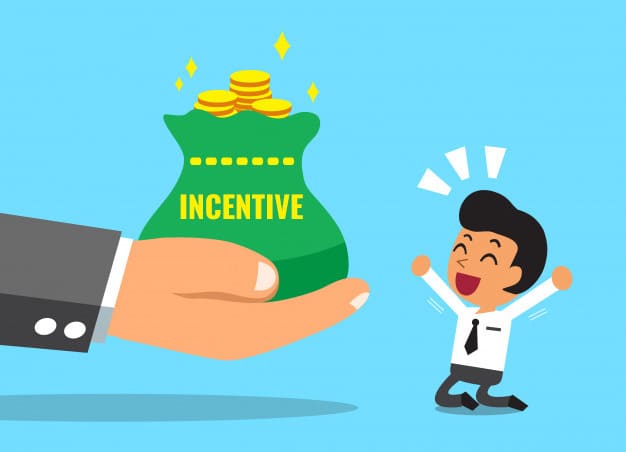Employers are always looking for new and innovative ways to improve the health of their employees. One way to do this is by offering wellness incentives. These are rewards that are offered to employees for making healthy choices, such as exercising regularly, eating healthy foods, and getting enough sleep. Offering wellness incentives can have a number of benefits for both employers and employees. In this blog post, we will discuss the benefits of wellness incentives and explore some of the different types that are available.
What Is Wellness Program?

A wellness program is an employer-sponsored or employee-paid program that offers health, fitness, and/or other wellness services to employees. Many wellness programs include a financial incentive for participation (usually in the form of a reduction in the employee’s health insurance premium), but some do not.
These incentives are typically offered in the form of cash, prizes, or points that can be redeemed for merchandise. The employer may also offer non-cash incentives, such as flexible work hours or additional paid time off.
Types Of Incentives For Wellness Programs
There are many types of incentives available for a wellness program. They must be tailored to the demands of your workers in order to be effective. At times, picking an incentive might be difficult. Time and money are also precious. No one wants their time or money to be wasted, which is why it’s critical for a manager to offer items or services that his or her workers truly value.
You’ll need to know different sorts of incentives to categorize them quickly. Here are five examples of cost-free incentives:
Cost Incentives

These are the most common type of incentives. They come in many forms, but the goal is always to lower the costs associated with health care. The following are some examples of cost incentives:
- Premium waivers or discounts
- Lower deductibles
- Coverage for preventive services
- Gym memberships
- Fitness classes
- Nutrition counseling
- Weight-loss programs
- Smoking cessation programs
These are just a few examples, but as you can see, there are many ways to incentivize healthy behavior without breaking the bank. And, as an added bonus, these types of incentives often lead to long-term changes in habits and lifestyles.
No Cost Incentives
There are also plenty of no-cost incentives that can be just as effective as their costlier counterparts. Here are a few examples:
- Paid time off to exercise
- Flexible work hours
- Standing desks
- Telecommuting options
- On-site child care
These types of incentives show employees that you value their time and their health. And, like cost incentives, they can lead to long-term changes in habits and lifestyles.
Progress Based Incentives
Another type of incentive is the progress-based incentive. This is where employees are rewarded for meeting certain milestones. For example, an employee who quits smoking may be eligible for a bonus after six months of smoke-free. Or, an employee who loses 20 pounds may be eligible for a gift card.
The key to progress-based incentives is to make sure the milestones are realistic and attainable. You don’t want employees to feel discouraged or like they’re set up for failure.
Participation-Based Incentives

Finally, there are participation-based incentives. These are typically given to employees just for taking part in a wellness program. For example, an employee who attends a health fair or completes a health risk assessment may be eligible for a prize.
Participation-based incentives are a great way to get employees engaged in your wellness program. They’re also a great way to show employees that you value their time and their participation.
Result-Based Incentives
The last type of incentive is the result-based incentive. This is where employees are rewarded for achieving specific health-related goals. For example, an employee who lowers his or her cholesterol may be eligible for a bonus. Or, an employee who meets her blood pressure goal may be eligible for a gift card.
Result-based incentives are a great way to encourage employees to take control of their health. They’re also a great way to show employees that you value their health and their success.
When it comes to wellness incentives, there are many options available. The key is to find the right mix of incentives that will work for your employees. And, as always, be sure to tailor your incentives to the needs of your workforce.
What Should Be Included In A Wellness Program?
When it comes to designing a wellness program, there are many things to consider. But one of the most important is what sort of incentives you’ll offer. Why? Because offering rewards for healthy behaviors can have a big impact on employee wellbeing. There are a few things to keep in mind when choosing wellness incentives.
Health Screenings

Blood pressure, cholesterol, and glucose testing are some of the most common health screenings offered. These health screening results can help identify risk factors for chronic diseases.
Health screenings are also important for the early detection of some cancers and other health issues. If you find these issues in the early stage, you can often treat them more effectively.
Health Assessments
A health assessment is a questionnaire that asks employees about their health, lifestyle, and family medical history. Health assessments can help identify risk factors for chronic diseases and other health problems. They can also help to create a baseline of an employee’s current health status. This information can be used to create a personalized wellness plan for each employee.
Wellness Education
Wellness education can help employees learn about healthy lifestyle choices. This type of education can include topics like nutrition, physical activity, stress management, and tobacco cessation. Wellness education can also help employees understand their health risks and what they can do to reduce those risks.
Incentives
Incentives are often used to encourage employees to participate in wellness programs. Common incentives include gift cards, fitness center memberships, and cash bonuses. Incentives can also be used to encourage employees to reach health goals, such as quitting smoking or losing weight.
Wellness incentives can be a great way to improve employee health and reduce healthcare costs. If you are considering a wellness program for your organization, be sure to include some type of incentive.
So these are some must include combinations in a wellness program. These programs will help in detecting the diseases at an early stage and will also assist in creating a baseline of an employee’s current health status. With all these benefits, it is always advisable to have some type of incentive to encourage the employees’ participation.
10 Must-Have Wellness Incentives For Employees

When it comes to workplace wellness, employers have a lot of options to choose from. But with so many different programs and initiatives out there, it can be tough to know where to start.
One of the most effective ways to encourage healthy behaviors among your employees is to offer incentives for reaching wellness goals. Not only does this help employees stay motivated, but it can also lead to significant cost savings for your company. Here are ten of the most popular wellness incentives that employers are offering today:
Fitness Trackers
Offering employees a fitness tracker is a great way to encourage them to be more active. Not only will they be able to track their own progress, but they’ll also be able to compete with their co-workers to see who can take the most steps or burn the most calories. This friendly competition can go a long way in getting employees to stick with their fitness goals.
Gift Cards
Who doesn’t love a gift card? Offering employees a gift card for reaching their wellness goals is a great way to show your appreciation for their efforts. And since there are so many different types of gift cards available, you can easily find one that fits your budget. These cards can be used for anything from groceries to gym memberships, so employees can use them however they see fit.
Extra PTO
If you want to really show your employees that you value their health, offer them extra paid time off for reaching their wellness goals. This is a great way to show your employees that you’re willing to invest in their health, and it can also lead to increased productivity in the workplace. These extra days can be used for anything from a much-needed vacation to simply taking some time off to relax and recharge.
Health Insurance Discounts
Many employers are now offering discounts on health insurance premiums for employees who meet certain wellness goals. This is a great way to encourage healthy behaviors while also saving your company money on healthcare costs. You can offer a percentage discount for employees who meet certain criteria, such as quitting smoking or reaching a certain fitness goal.
No-Interest Loans
For employees who need a little extra help to reach their wellness goals, consider offering no-interest loans. This can be a great way to help employees pay for things like gym memberships or fitness equipment. And since the loans are interest-free, employees will be more likely to pay them back. These loans can be paid back over time, or they can be deducted from employees’ paychecks.
Free Memberships
If you really want to encourage your employees to be active, consider offering free memberships to a local gym or fitness center. This is a great way to show your employees that you’re committed to their health, and it can also lead to significant cost savings for your company. Many gyms and fitness centers offer discounts for corporate memberships, so be sure to ask about this when you’re looking into this option.
Plan Worksite Exercise Classes
One of the best ways to encourage employee wellness is to offer on-site exercise classes. This is a great way to get employees moving, and it can also be a great team-building activity. There are a variety of different types of exercise classes that you can offer, so be sure to choose ones that fit your budget and your employees’ interests.
These are some of the most popular wellness incentives that employers are offering today. By offering these types of incentives, you can encourage healthy behaviors among your employees and save money on healthcare costs.
This is a great way to encourage employees to be active and engaged in their health and wellness goals. Not only will they be more likely to stick with their goals, but they’ll also be more likely to achieve them.
Conclusion
In conclusion, wellness incentives are a great way to promote healthy behaviors and improve employee productivity. By offering rewards for healthy behaviors, employers can encourage their employees to lead healthier lifestyles. In addition, wellness incentives can also help to reduce health care costs.
Mantra Care is a platform that can help your company create and manage wellness incentive programs. Contact us today to learn more about how we can help you promote healthy behaviors in your workplace.
A Word From MantraCare Wellness
Employee wellness programs are the key to improving employee motivation, productivity, and retention. At MantraCare Wellness, we have a team of health experts, counselors, and coaches who serve corporate employees with 10+ wellbeing programs including EAP, Employee Diabetes Reversal, Corporate MSK, PCOS, Employee Fitness, Corporate Yoga, Employee meditation, and Employee Smoking Cessation.



